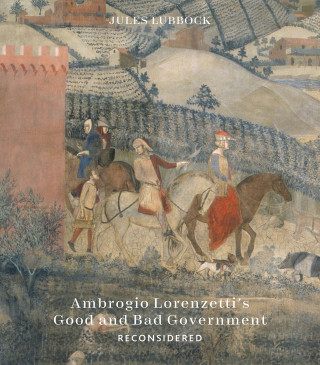
Kód: 45281971
Ambrogio Lorenzetti’s Good and Bad Government reconsidered
Autor Jules Lubbock
This book sheds new light on one of the most important artworks of the early ItalianRenaissance, Ambrogio Lorenzetti’s fresco cycle of Good and Bad Government inthe Palazzo Pubblico in Siena. By connecting the images with the Hymn ... celý popis
- Jazyk:
 Francouzština
Francouzština - Vazba: Pevná
- Počet stran: 304
Nakladatelství: HOLBERTON, 2024
- Více informací o knize

Mohlo by se vám také líbit
Darujte tuto knihu ještě dnes
- Objednejte knihu a zvolte Zaslat jako dárek.
- Obratem obdržíte darovací poukaz na knihu, který můžete ihned předat obdarovanému.
- Knihu zašleme na adresu obdarovaného, o nic se nestaráte.
Informovat o naskladnění knihy
Zadejte do formuláře e-mailovou adresu a jakmile knihu naskladníme, zašleme vám o tom zprávu. Pohlídáme vše za vás.
Více informací o knize Ambrogio Lorenzetti’s Good and Bad Government reconsidered
Nákupem získáte 179 bodů
 Anotace knihy
Anotace knihy
This book sheds new light on one of the most important artworks of the early ItalianRenaissance, Ambrogio Lorenzetti’s fresco cycle of Good and Bad Government inthe Palazzo Pubblico in Siena. By connecting the images with the Hymn to Justiceinscribed on the walls and highlighting Ambrogio’s ingenuity and personal approach tothe subject the volume presents a fresh reading of its rich artistic message.In 1338 Ambrogio Lorenzetti painted three huge frescoes, known today as Good andBad Government, on the walls of the Sala dei Nove, the Room of the Nine, in the PalazzoPubblico in Siena, where the city’s nine executive magistrates presided over the destinyof this famous commune. The frescoes were meant to be strong visual reminders ofthe Nove’s duties and an admonishment of the nefarious effects of bad government.Boasting the largest artist’s signature of all time, the frescoes are testament to theextremely high esteem in which Ambrogio’s art was held by his fellow citizens.Nowadays Good and Bad Government has become one of the most widely reproducedworks of the early Renaissance and is recognized for its many innovations, including thefirst European panorama of a cityscape and countryside. But what sort of visual journeywas Ambrogio asking the Nove to make through this expanse?In pursuit of an elusive answer, the murals have become one of art’s great puzzles,challenging scholars and public alike. Scant attention, however, has been paid to theimages themselves. They have been studied merely as symbols and allegories of abstractpolitical concepts in which good and bad government are starkly juxtaposed. Despitehis enormous signature, Ambrogio has been treated more as a servile illustrator thana creative artist, disregarding his highly personal approach to painting and the wayhis visual ingenuity, from composition to brushwork, shaped a far more complex andfascinating message.This book attempts finally to illuminate Ambrogio’s pictorial strategy by readingit in light of the Hymn to Justice inscribed upon the walls. The frescoes enrich thepoet’s message, subtly changing and even subverting it. Instead of a pictorial lecturestraightforwardly contrasting a utopia with a dystopia, Ambrogio blurs the binaries andinvites the viewer to look beneath the idyllic surface of Sienese civic life.
 Parametry knihy
Parametry knihy
Zařazení knihy Knihy ve francouzštině ARTS ET BEAUX LIVRES Arts majeurs Arts graphiques (dessin, estampes, fresques, graffiti, gravures…)
1792 Kč
- Plný název: Ambrogio Lorenzetti’s Good and Bad Government reconsidered
- Podnázev: Painting the Politics of Renaissance Siena
- Autor: Jules Lubbock
- Jazyk:
 Francouzština
Francouzština - Vazba: Pevná
- Počet stran: 304
- EAN: 9781915401137
- ID: 45281971
- Nakladatelství: HOLBERTON
- Hmotnost: 1 g
- Rozměry: 280 × 245 × 1 mm
- Datum vydání: 05. November 2024
Oblíbené z jiného soudku
-

GROUNDWORK OF EVANGELION 3.0 YOU CAN (NOT) REDO ARTBOOK VOL.02 (VO JAPONAIS)
1792 Kč -
![PANDORA HEARTS [THERE IS.] (ARTBOOK VO JAPONAIS) PANDORA HEARTS [THERE IS.] (ARTBOOK VO JAPONAIS)](https://media.libris.to/jacket/46456505t.jpg)
PANDORA HEARTS [THERE IS.] (ARTBOOK VO JAPONAIS)
1748 Kč -

INOUE TAKEHIKO ILLUSTRATIONS (ARTBOOK VO JAPONAIS) (46ème Réimpression en 2022)
1009 Kč -

GLAREXSPARKLE - OSHI NO KO 1ST ILLUSTRATION BOOK (ARTBOOK VO JAPONAIS)
1213 Kč -

SUZUME ILLUSTRATIONS (ARTBOOK VO JAPONAIS)
1633 Kč -

BLUE PERIOD ARTBOOK (ARTBOOK VO JAPONAIS)
1618 Kč -

BLUE LOCK CHARACTER BOOK EGOIST BIBLE (VO JAPONAIS)
607 Kč -
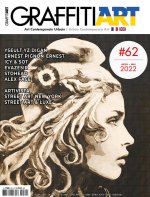
Graffiti art n°62 : L'Art Urbain à pleins poumons - Avril / Mai 2022
317 Kč -
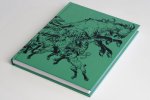
Sketchbook 2018
3207 Kč -

Bardot-Manara : une rencontre - édition luxe
3076 Kč -
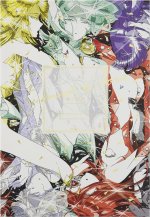
HARUKO ICHIKAWA ILLUSTRATION BOOK - PSEUDOMORPH OF LOVE (ARTBOOK VO JAPONAIS)
1488 Kč -
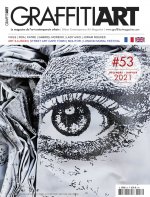
Graffitiart N°53 - novembre/décembre 2020
317 Kč -

GROUNDWORK OF EVANGELION 2.0 YOU CAN (NOT) ADVANCE ARTBOOK VOL.02 (VO JAPONAIS)
1691 Kč -

TOKYO REVENGERS BRILLANT FULL COLOR EDITION - TOME 1 (ARTBOOK VO JAPONAIS)
434 Kč -

GROUNDWORK OF EVANGELION 3.0 YOU CAN (NOT) REDO ARTBOOK VOL.01 (VO JAPONAIS)
1691 Kč -

SNOW WHITE WITH THE RED HAIR FAN BOOK (ARTBOOK VO JAPONAIS)
434 Kč -

EVANGELION ILLUSTRATIONS 2007-2017 (ARTBOOK VO JAPONAIS)
1500 Kč -

Dessins d'architecture au XVIIIème siècle
521 Kč -

Small S vol.75 Eru Uekura /japonais
851 Kč -

Les maquettes Matchbox, 1973-2000
576 Kč -
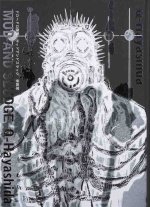
DOROHEDORO GASHU MUD & SLUG (ARTBOOK VO JAPONAIS)
2912 Kč -

FRIEREN: BEYOND JOURNEY'S END ARTWORKS 1 (ARTBOOK VO JAPONAIS)
1301 Kč -

BUNGO STRAY DOGS ANTHOLOGY – KANADE (ARTBOOK VO JAPONAIS)
434 Kč -

GOLDEN KAMUI OFFICIAL FAN BOOK
491 Kč -

JOJO 6251 ARAKI HIROHIKO'S WORLD (ARTBOOK VO JAPONAIS)
1243 Kč -

THE QUINTESSENTIAL QUINTUPLETS CHARACTER BOOK MAY (ARTBOOK VO JAPONAIS)
434 Kč -

BERSERK ILLUSTRATION - MOVIE ARTBOOK CHARACTER PART (VO JAPONAIS)
1647 Kč -

ONSLAUGHT NOIR LAGOON 20TH ILLUSTRATION (ARTBOOK VO JAPONAIS)
1647 Kč -

Transformers Legacy: L'art des jouets Transformers
837 Kč -

TATTOO STICKERS COLLECTORS
781 Kč -
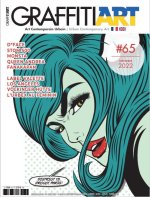
Graffiti art n°65 : L’Urbex au féminin - Septembre 2022
317 Kč -
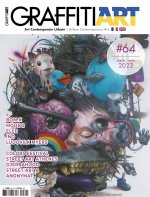
Graffiti art n°64 : Le Street Art entre ombre et lumière - Juillet/Août 2022
317 Kč -

DEMON SLAYER ANIME - COLLECTION D'ILLUSTRATIONS 2 (ARTBOOK VO JAPONAIS)
1041 Kč -

Sketch.Box: Abigail Larson
665 Kč -
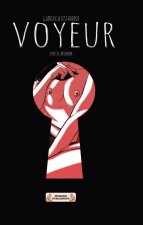
Voyeur
518 Kč -

Graffiti Art N°75 : L’art urbain à l’ère numérique - Février 2024
317 Kč -

Yingbi shoujin ti qian zi wen 硬笔瘦金体千字文
347 Kč -

Graffiti Art N°73 - Octobre-Novembre 2023
317 Kč -
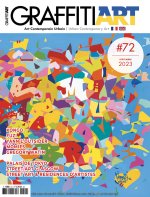
Graffiti Art N°72 - Septembre 2023
317 Kč -

Graffiti Art N°76 : Special Invaders - Avril-Mai 2024
317 Kč -

GraffitiART 77 : Juin - Juillet 2024
317 Kč -
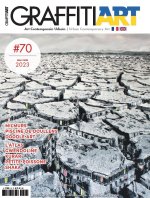
Graffiti Art N°70 : Le Street Art, un art à impact ? - Mai-Juin 2023
317 Kč -
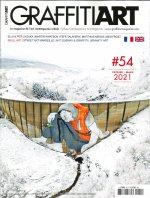
Graffitiart N°54 - janvier/février 2021
317 Kč -
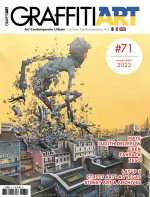
Graffiti Art N°71 - Juillet-Août 2023
317 Kč -

Graffiti art n°61 - L'Art Urbain à foison - Février / Mars 2022
317 Kč -

Graffiti art n°63 : Street Art et voyages - Mai/Juin 2022
317 Kč -

Guide de l'art contemporain urbain 2023
742 Kč -

Graffiti Art n°67 : Le Street Art en fête - dec-janv 2022-2023
317 Kč -

ARTBOOK VALVERDE
512 Kč
Osobní odběr Praha, Brno a 12903 dalších
Copyright ©2008-24 nejlevnejsi-knihy.cz Všechna práva vyhrazenaSoukromíCookies








 Vrácení do měsíce
Vrácení do měsíce 571 999 099 (8-15.30h)
571 999 099 (8-15.30h)